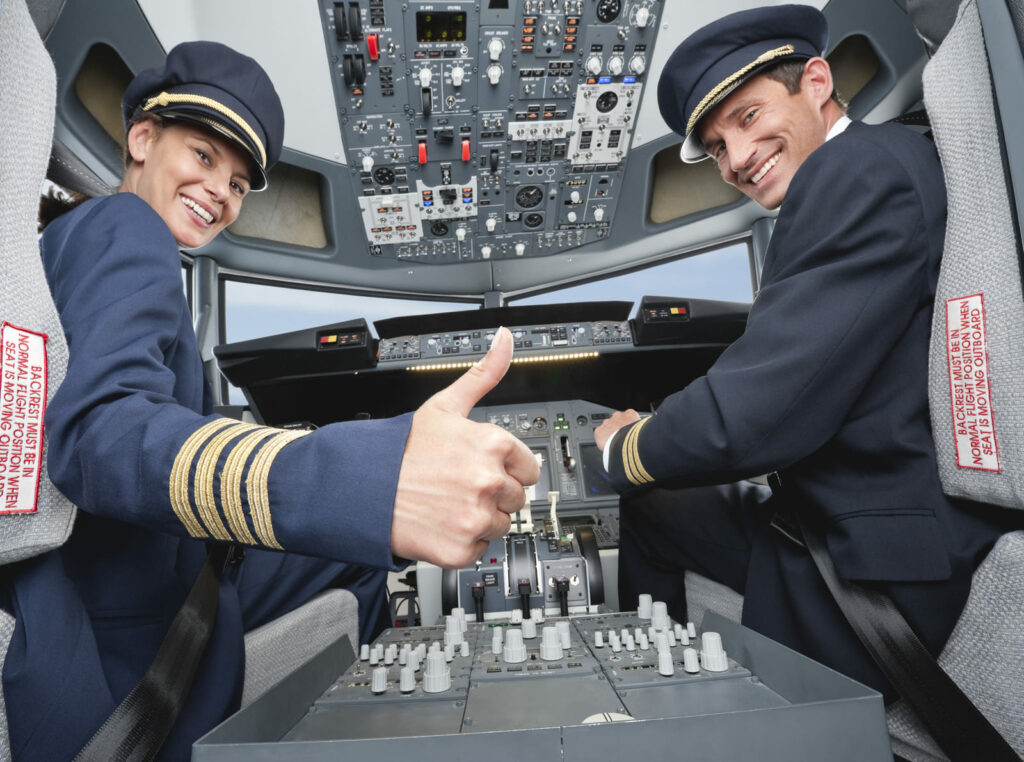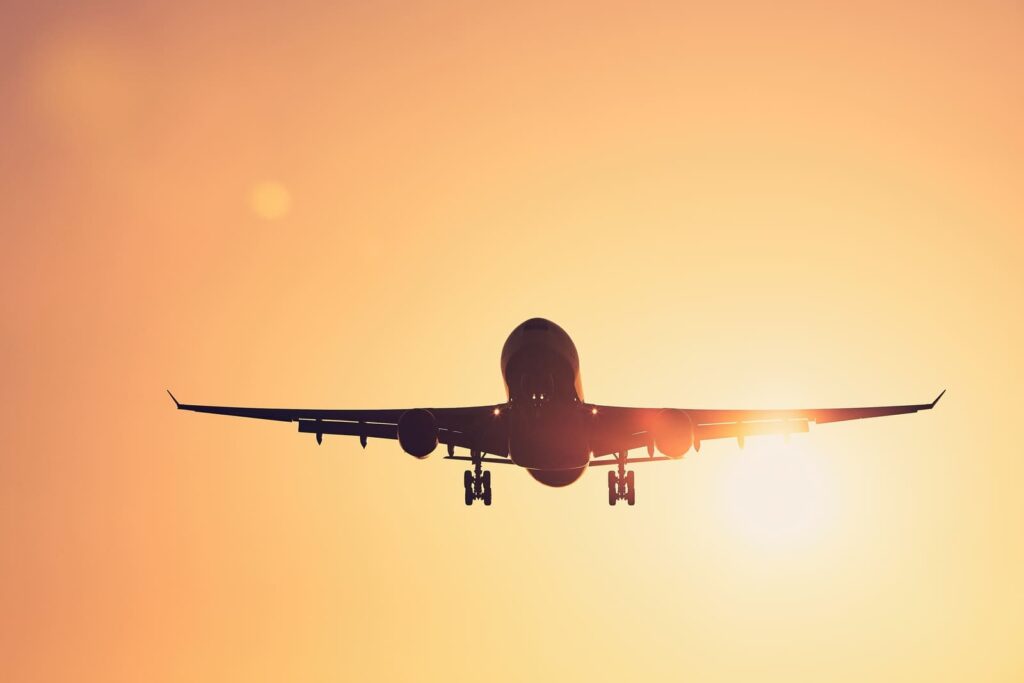Interested in becoming a pilot?
In the upcoming article, we’ll navigate through the distinct phases of pilot training, offering valuable insights into the milestones that pave the way to realizing your dream of becoming a pilot. From foundational Private Pilot License (PPL) training to advanced Multi Crew Cooperation (MCC) and specialized Jet Orientation Training (JOT), each step is a vital piece in the mosaic of your aviation journey. Join us as we unravel the captivating process that propels you skyward toward a fulfilling career in the world of aviation.

Embarking on the exhilarating journey of becoming a pilot opens up a choice: modular or integrated training. The steps remain the same in both approaches; however, the key distinction lies in the pace of completion and the timing of obtaining the professional license. With modular training, you have the flexibility to complete each step independently, allowing for a more personalized, gradual progression. On the other hand, integrated training follows a structured path, culminating in the issuance of a professional license only at the end.
The decision between modular and integrated training hinges on individual preferences and aspirations. Whether you opt for a modular or integrated path, at Fly-Coop Academy financing your training step by step is a viable option in both cases.
After choosing your preferred training structure, your aviation journey begins with attaining a Private Pilot License (PPL), a key milestone on your path to becoming a skilled pilot. This license serves as the cornerstone for independent experience and all further training. To obtain it, you will need to complete an approximately six-month theoretical course and undergo 45 hours of practical training. Upon successfully demonstrating your theoretical knowledge in a regulatory exam, you’ll showcase your practical proficiency in a one and a half hour checkride.
With this accomplishment, now you can start flying solo. You can invite friends and family on leisurely sightseeing flights, explore your homeland, or even venture to foreign skies at different airports.
With your PPL in hand, you’re ready to start clocking in those valuable flight hours. Some specialized training programs may have additional requirements for flight experience beyond holding a private pilot’s license. Your license grants you the privilege to rent any of our single-engine piston aircraft. Should you wish to explore a new and exciting aircraft type, you’ll have the opportunity to participate in a specialized training course. This will equip you with the knowledge and proficiency needed to operate that specific type of aircraft.

Once the sun sets and the landscape transforms, it’s a whole new world up there. Embracing this change, Visual Flight Rules (VFR) training becomes a captivating experience. It involves a few hours of ground briefing and five hours of practical flight instruction, which includes a proficiency check flight. This phase is designed to ensure you’re comfortably acquainted with the night skies.
At this stage, it’s worth considering starting the ATPL theory course. The ATPL (Airline Transport Pilot License), also known as an airline pilot’s professional license, is necessary to become a captain on a passenger or cargo aircraft. You may be far from this point, but most airlines expect you to complete the theoretical portion of this training before applying. The advantage is that it can replace the theoretical courses for certain other certifications. In other words, once you pass the ATPL theory exams, you’ll mainly have practical training left to complete.
Step 6: Instrument Training
Now you can fly both day and night, but only under Visual Flight Rules (VFR), meaning you must have visual reference to the ground. You cannot fly, for example, in fog or clouds. This would be a significant obstacle for operating a passenger aircraft, so you’ll need to participate in instrument flight training. This training will teach you how to fly solely relying on instruments, without any external visual references, over the course of 50 flight hours.
Step 7: Multi-Engine Training
Whether an aircraft has one, two, or multiple engines, they all fly in the same direction (ideally, forward). However, there are nuances. The construction of multi-engine aircraft is motivated by safety – if one engine fails, there’s another to rely on. Yet, flying multi-engine aircraft demands additional attention, prompting the need for specialized training. The training consists of a few hours of classroom preparation and six hours of practical flight instruction, and at the end of it, you’ll undergo a regulatory exam to demonstrate the knowledge and skills acquired throughout the course.

Step 8: Extension of Multi-Engine Instrument Rating
The multi-engine instrument rating obtained with us initially applies exclusively to single-engine aircraft. To extend this proficiency to multi-engine types, enabling you to confidently navigate using instruments across various aircraft, a five-hour practical flight instruction is required. During this training, you’ll perform instrument-related tasks on a multi-engine aircraft, broadening the scope of your flying capabilities.
You’ve reached the conclusion of your training in general aviation. Following the acquisition of your Commercial Pilot License (CPL), you can now serve as a professional pilot. This phase involves 15 hours of practical flight instruction. It is originally a 25-hour course, but 10 hours are credited if you already hold an instrument rating. By the completion of the training, you must accumulate a total of 200 flight hours, with at least 100 hours flown solo. Additionally, success in exams covering all ATPL theoretical subjects is required.
This training also involves a regulatory exam, and upon successful completion, you’ll find yourself the proud holder of almost all the licenses and certifications required for flying large aircraft, just a few weeks after completing the program.
Step 10: Further Trainings
You’re nearing the finish line, but in the realm of airlines, there’s a crucial step remaining—the so-called MCC (Multi Crew Cooperation) training. Given that commercial aircraft are invariably operated by more than one pilot, mastering the division of tasks and the nuances of rapid communication between crew members is essential. This can be acquired either within a 20-hour framework or through the APS MCC (Airline Pilot Standard Multi Crew Cooperation) – a 40-hour training. Additionally, some airlines require the completion of JOT (Jet Orientation Training), which is designed to familiarize pilots with the operation of jet engines.
Just before the final step, pilots are immersed in UPRT (Upset Prevention and Recovery Training). This training equips pilots with the knowledge to skillfully navigate various emergency situations. It serves as a vital tool, ensuring their ability not only to avoid and prevent potential upsets but also to adeptly correct and manage unforeseen challenges.
Step 11: Type Rating
For aircrafts utilized by airlines, possessing a type rating is a requirement. Type-specific training involves acquiring theoretical and practical knowledge about the systems, servicing, prescribed procedures by the airline, and emergency protocols of the specific aircraft. The process culminates in an examination and a landing training session.